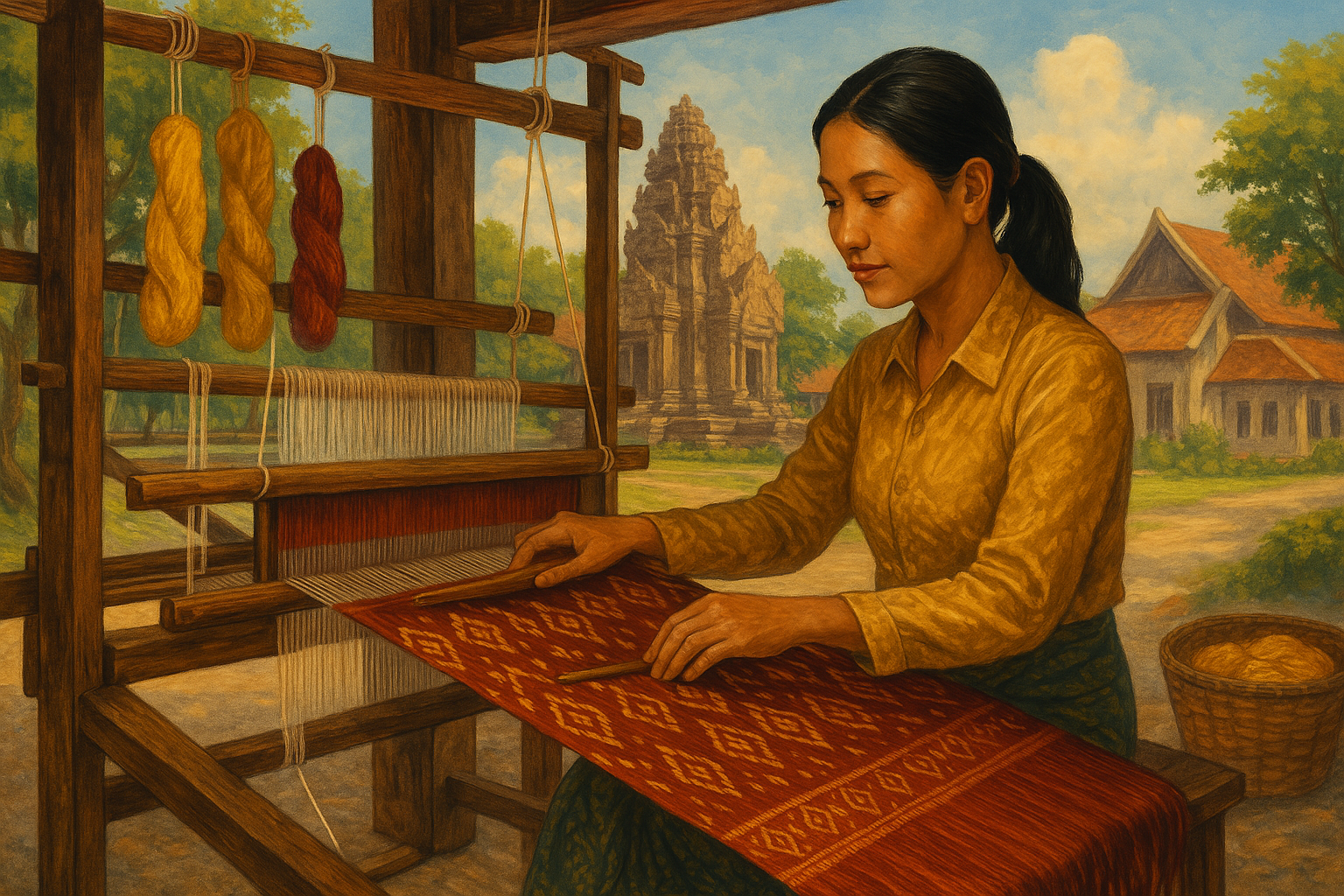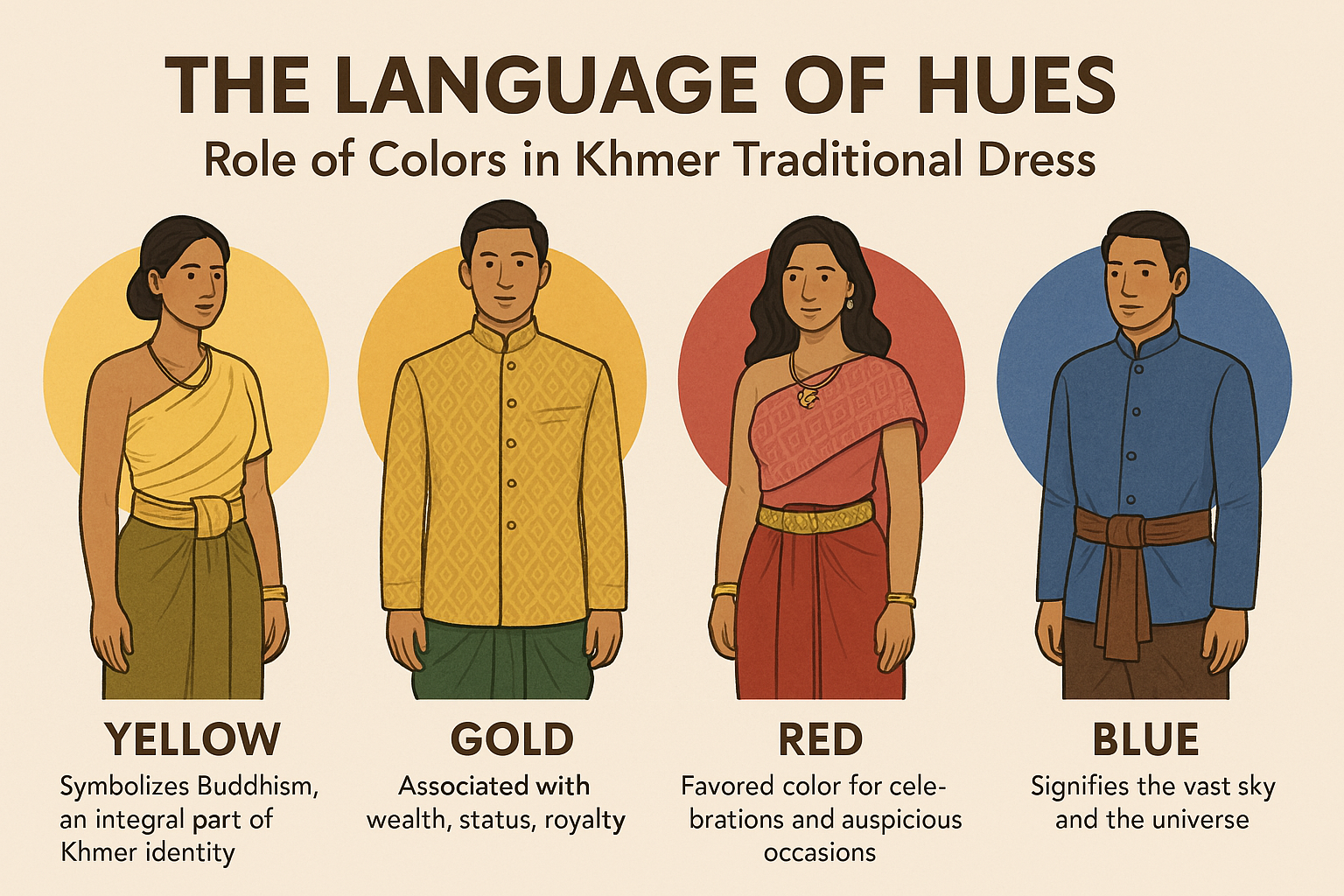The Khmer Rouge regime, ruling Cambodia from 1975 to 1979, inflicted unimaginable trauma upon its people, aiming to radically reshape society through violence and extreme ideology. This brutal campaign extended to all facets of life, including clothing and fashion. Traditional Khmer dress, with its rich history, vibrant colors, and intricate designs, was systematically suppressed and replaced with enforced uniformity, representing a devastating assault on cultural identity and individual expression. The regime’s fall marked the beginning of a long, arduous process of recovery and reclaiming heritage through textiles and fashion.
Erasing Tradition: The Suppression of Khmer Dress

Driven by a radical Maoist ideology aiming to establish a classless, agrarian utopia and return Cambodia to “Year Zero,” the Khmer Rouge viewed traditional culture as decadent and counter-revolutionary. Aspects of traditional dress were targeted for elimination:
- Symbols of the Past: Colorful silk Sampots, elaborate embroidery, religious amulets, and fine jewelry were associated with the “old society” – its hierarchies, Buddhist faith, royal traditions, and perceived bourgeois values. Wearing such items was deemed unacceptable and dangerous.
- Individuality Forbidden: Any form of personal expression through clothing that deviated from the norm was suppressed. The goal was to erase individual identity and subsume everyone into the collective, known simply as “Angkar” (The Organization).
- Foreign Influence Rejected: Styles perceived as foreign or modern were also forbidden as the regime pursued extreme isolationism.
The Uniform of Angkar: Forced Black Clothing
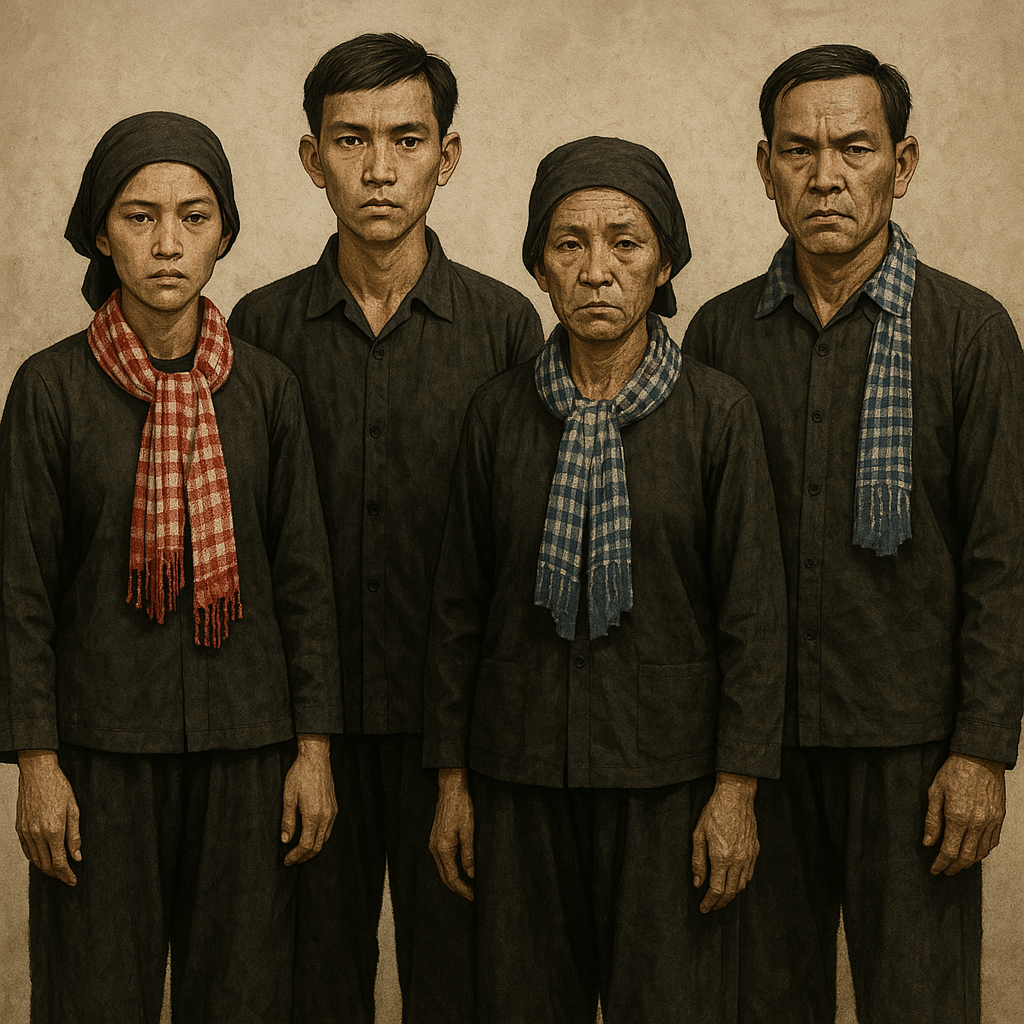
To enforce conformity and symbolize the new order, the Khmer Rouge mandated shapeless, unisex black clothing for the entire population. This typically consisted of:
- Black Pajama-like Garments: Loose-fitting, collarless black shirts (Av Babao) and baggy trousers (Khaw Babao), often made from coarse, cheap cotton.
- Intended Symbolism: This uniform was designed to strip individuals of their identity, making everyone appear identical and insignificant. It represented the regime’s idealization of the peasant class, enforced austerity, and facilitated surveillance and control. The drab uniformity reflected the grim reality of life under Angkar.
- The Checkered Krama: The traditional peasant scarf, the Krama, particularly in red-and-white or blue-and-white checks, was often incorporated into the forced attire. However, its meaning was twisted; while used practically, it also became associated with the regime and sometimes used to identify cadres or work units, complicating its symbolism for survivors.
Decimation of an Art: Impact on the Textile Industry
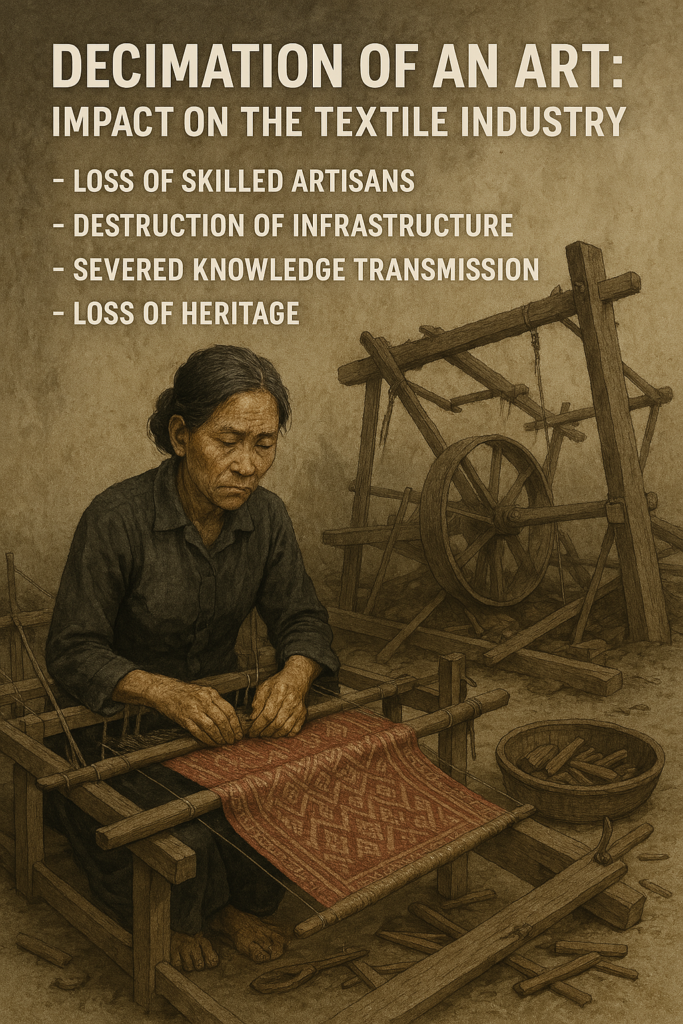
The Khmer Rouge regime dealt a catastrophic blow to Cambodia’s rich and ancient textile traditions, particularly silk weaving:
- Loss of Skilled Artisans: Weavers, dyers, embroiderers, and tailors, especially those renowned for complex techniques like Ikat (Chong Kiet) used for Sampot Hol, or those associated with urban or elite styles, were often targeted as intellectuals or remnants of the old society. Many were killed, died from starvation or disease in forced labor camps, or fled the country.
- Destruction of Infrastructure: Looms were frequently dismantled for firewood or left to rot. Mulberry plantations essential for raising silkworms (sericulture) were destroyed or repurposed for other crops under the disastrous agricultural policies.
- Severed Knowledge Transmission: The systematic murder and displacement decimated the ranks of master artisans, breaking the crucial chain of passing down intricate knowledge and skills – such as natural dyeing recipes, complex weave structures, and traditional motifs – to the next generation.
- Loss of Heritage: Countless precious heirloom textiles, representing centuries of artistry, were lost, destroyed, or confiscated during the chaos and upheaval.
Threads of Recovery: Revival After the Fall
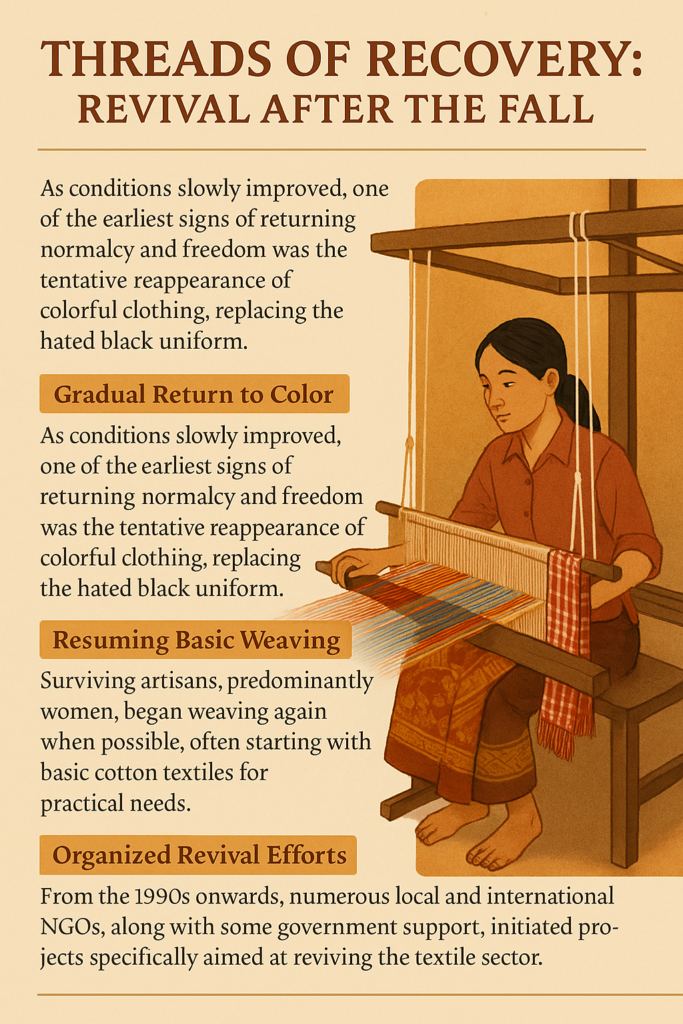
Following the overthrow of the Khmer Rouge in January 1979, the path to recovery was incredibly difficult. The immediate focus was on survival amidst famine and instability.
- Gradual Return to Color: As conditions slowly improved, one of the earliest signs of returning normalcy and freedom was the tentative reappearance of colorful clothing, replacing the hated black uniform.
- Resuming Basic Weaving: Surviving artisans, predominantly women, began weaving again when possible, often starting with basic cotton textiles for practical needs.
- Role of Diaspora: Cambodian refugees who settled abroad played a vital role in preserving cultural knowledge, including textile traditions, and later contributed to revival efforts through remittances, investment, or returning with skills.
- Organized Revival Efforts: From the 1990s onwards, recognizing the endangered state of traditional crafts, numerous local and international NGOs, along with some government support, initiated projects specifically aimed at reviving the textile sector. These focused on re-establishing sericulture, training new weavers (often targeting vulnerable women), documenting traditional techniques, improving quality, and finding markets for Cambodian textiles, especially silk.
Fashion as Resilience: Reclaiming Cultural Identity

In the decades since the Khmer Rouge, and continuing strongly into 2025, fashion and traditional dress have become powerful tools for healing and reclaiming Cambodian cultural identity:
- Symbolic Significance: Choosing to wear traditional Sampots, Krama (now reclaimed with pride as a national symbol), and other Khmer garments for weddings, religious ceremonies, and cultural festivals is often a conscious act of defiance against the regime’s attempt at cultural erasure and a celebration of heritage.
- Contemporary Design: Modern Cambodian fashion designers frequently draw inspiration from their heritage, incorporating traditional motifs (kbach), weaving techniques, revived silks, and silhouettes into contemporary clothing. This serves both to keep traditions relevant and to make a statement about cultural pride and resilience on national and international stages.
- Cultural Promotion: Fashion shows, artisan workshops, and cultural events specifically promoting Cambodian textiles actively work to restore and celebrate the artistry that was nearly lost.
- Embracing Beauty and Choice: The renewed embrace of vibrant colors, intricate designs, beautiful adornment, and individual style choices in clothing stands as a living repudiation of the enforced, dehumanizing uniformity of the Khmer Rouge era.
Conclusion
The Khmer Rouge regime’s attempt to obliterate Cambodia’s cultural identity included a brutal assault on its traditional clothing and textile arts. The forced imposition of black uniforms and the systematic destruction of skills and resources left deep scars. However, the enduring spirit of the Khmer people is evident in the painstaking revival of these traditions in the years since. As of today, traditional dress and contemporary fashion inspired by heritage are not just about aesthetics; they are powerful affirmations of survival, cultural continuity, and hope. In provinces like Battambang, which suffered immensely under the regime but now fosters a vibrant arts scene, this process of reclaiming identity through the threads of tradition is a living, ongoing testament to resilience. Sources and related content


